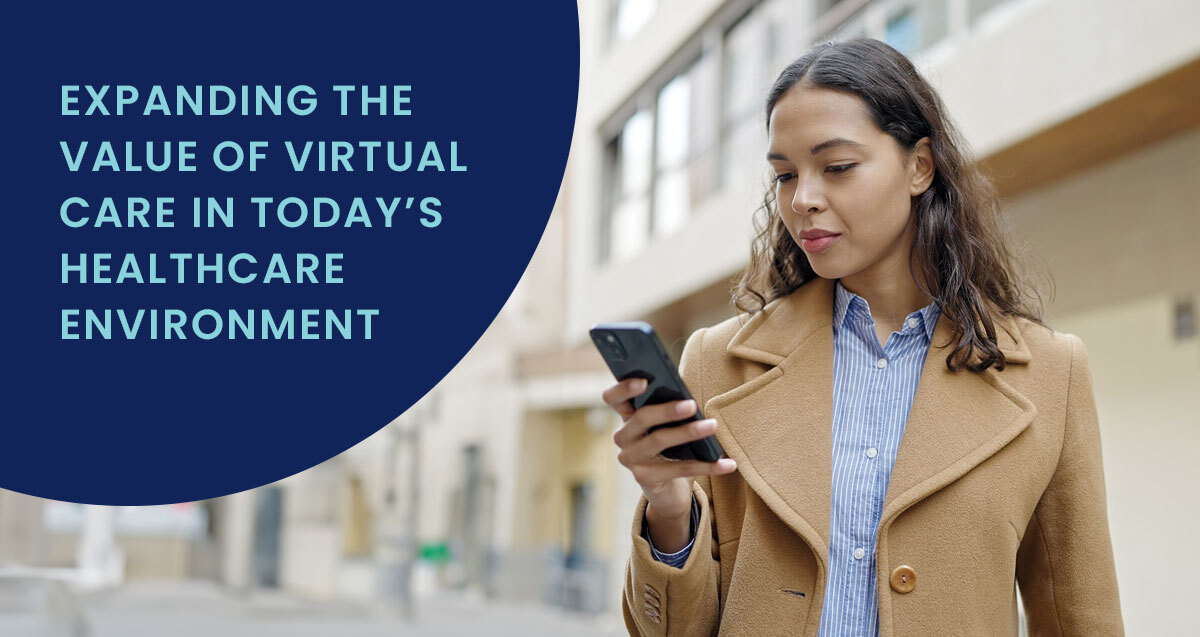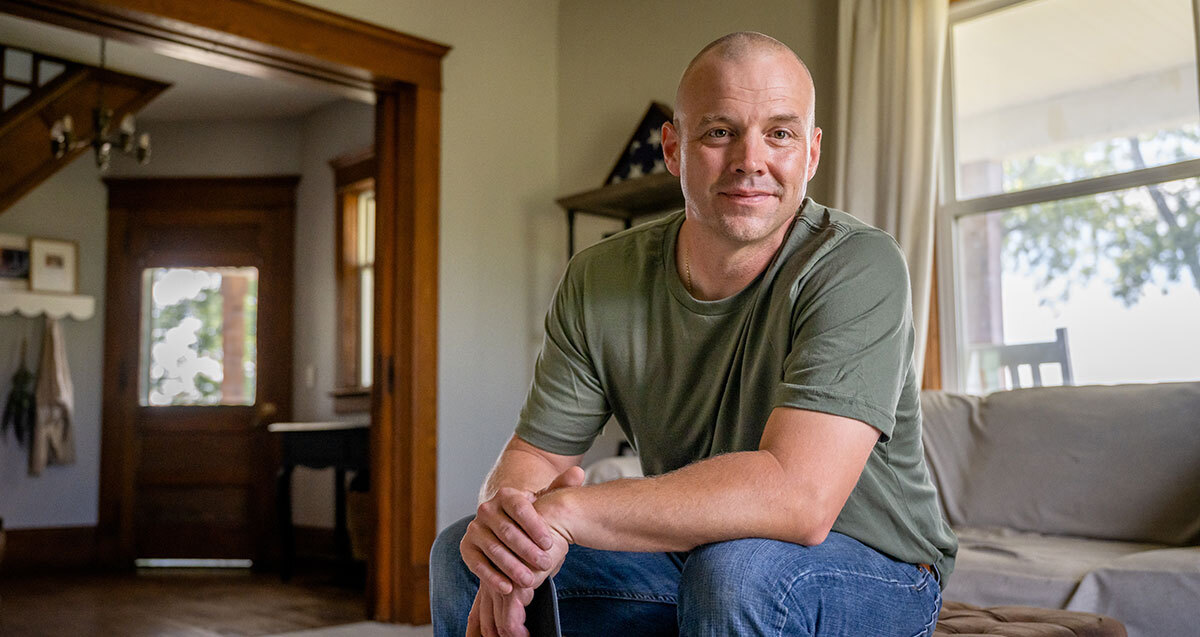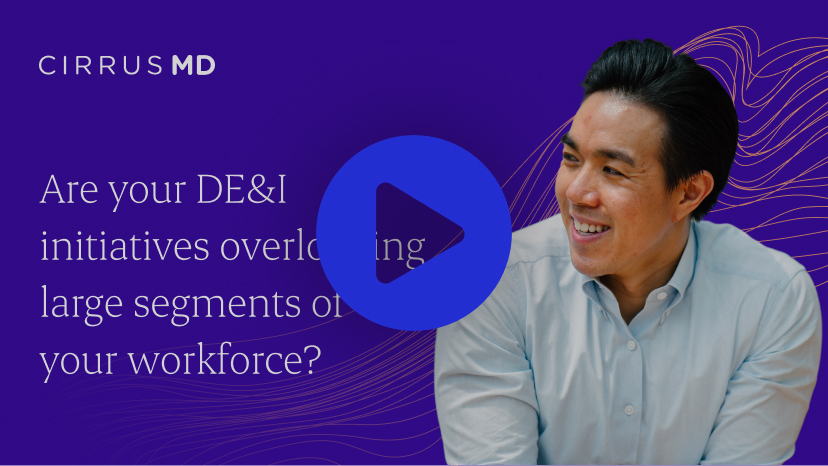
Webinar Summary
If you are an HR or employee benefits leader, diversity, equity and inclusion are top of mind.
But in your mission to address underserved employee cohorts, you may still be overlooking some sizable groups, especially when it comes to healthcare access.
You Will Learn
- How the unique needs of deskless workers require a different approach to accessing care
- How providing telehealth to uninsured workers can significantly improve productivity
- How to level the playing field for workers in rural communities
Presenters
JEFF CAVA
During his 40 year career, Jeff Cava has worked as a C-suite executive and human resource leader for Nike, Wendy’s International Inc and Starwood Hotels and Resorts WW Inc.. While at Wendy’s and Starwood, his teams were one of the first to lead the transition to account-based health care that helped to expand coverage and manage costs for employees and employers. He currently consults part-time with a number of global companies in many different industries.
JEFF VOSS
As the Vice President of Sales for CirrusMD, Jeff Voss leads a team that’s transforming the virtual care market. During his 15-year career in healthcare sales, Jeff has gained unique experiences and insights into the employer healthcare market.
CHERYL FLURY
Cheryl, Director of Marketing at CirrusMD, is an innovative marketing executive with a 15-year history of developing world-class strategies and branding campaigns to drive growth, penetrate markets, increase market share and remove obstacles within the healthcare space.
Video Transcript
Cheryl Flury:
Thank you everyone for joining today's webinar. What we're focusing on today is your DE& I initiatives and whether they're overlooking large segments of your workforce. I'm very pleased to be joined by two industry experts, Jeff Cava and Jeff Voss. They're each going to bring a very interesting and unique perspective to the topic that we'll be discussing.
During the last few years, it's become extremely clear that the topic of DE& I has really been evolving and advancing and I know that at CirrusMD we talk to a lot of employer groups who feel like they're not always able to completely address the needs of their very rapidly changing workforce. They're looking to be able to address their programs or advance their programs so that they are able to meet the needs of their workforce as environments change and employee needs change.
And so as we come together today, we're going to quickly explore this very rapidly evolving landscape. It's my pleasure to introduce you to our two presenters for the day, Jeff Cava and Jeff Voss. Jeff Cava comes to us from a significant background with companies like Starwood, Nike, and Wendy's where he was CHRO and he was a C-level executive in a number of roles at those organizations.
Primarily his focus was always on creating programs that delivered the best possible employee benefits and the best possible attainment of corporate goals. At the same time, Jeff brings a very interesting perspective that covers both the employees and the employers and I'm excited to hear what he has to say today.
Jeff Voss is the Vice President of Employer-Markets for CirrusMD, and he works specifically with large and small employers, brokers and consultants. Everything that Jeff does is focused on the employer side of the market and he brings great first-hand experience from the organizations that he works with. He gets to hear a lot about what's working and what's not working today.
So Jeff Cava, I'm actually going to start with you and your roles. I mentioned some of the organizations that you came from. In your roles, you had a lot of opportunity to really work on shaping employee benefits at these organizations. Can you tell me what some of the major goals were that you were working to address in your roles?
Jeff Cava:
Welcome everybody. In the early early days, we were looking at healthcare and health insurance as essentially an amenity; as almost as a prerequisite, and obviously as times have changed, it's become an absolute necessity. So for the bulk of my career, I was looking at issues of cost and coverage, which are traditional. You continue to look at those and gradually inclusivity, how do you cover the populations as broadly as possible. How do you encourage participation as broadly as possible? Recently we're seeing a shift as HR leaders increase the emphasis on accessibility, as well as effectiveness. Certainly cost and coverages were the biggest goals in the earlier days.
Cheryl Flury:
Thanks, Jeff. I'm going to go onto Jeff Voss and Jeff. I'm going to ask you about the work that you're doing with HR benefits leaders all around the U S and I know you have a lot of discussions with people who are trying to figure out how do we define the words, diversity, equity, and inclusion? I know there's been a lot of change in the way we look at DE and I. What kinds of things are you hearing and what definitions are people using?
Jeff Voss:
Sure. Thanks Cheryl. And thanks Jeff (Cava), for that, for that intro. You know, it's been interesting, the conversations that we've been having, with potential clients and their consultants as well. Not only are they those typical conversations around whether our virtual care solution is the right solution for them, but you know, what they've introduced more and more over the last couple of years is how, you know, how it aligns with their DE&I strategies, and do we have data to support that? So that's been really interesting.
We talk internally a lot about what those three terms, diversity equity inclusion really mean. And this audience on this call is probably as educated in that as anybody, but just for a quick sort of foundational description:
I saw this definition of diversity, which I thought was just interesting so I'm just going to read it. but basically it says it includes all the ways in which people differ Including all the characteristics that make one individual or group different from another. And I just thought that was a pretty interesting description of it. And what we've noticed in our business is where it used to be maybe things like race and ethnicity and gender, that has significantly broadened over the last couple of years to include things like sexual orientation, like gender identification. What we mean by diversity has just gotten broader. Equity, you know, a fairly easy one, but making it fair. And, you know, for people on this call, obviously thinking about from a benefit standpoint: how can you make those benefits equitable across your populations and thinking about how resources are allocated in a way so that they're equitable?
And then inclusion obviously is making the different groups, different constituents within your population, feel welcome. Are they respected? Do they feel valued? Which of course is important. And Jeff (Cava) mentioned that as well too. 'll leave you on this part of the topic with a quote I saw which I thought was valuable. The quote is: “diversity is being invited to the party. Inclusion is being asked to dance.” That just sort of helped affirm those terms up in my mind. Hopefully that helps.
Cheryl Flury:
Yeah. Thanks, Jeff. I appreciate that. Jeff Cava, we'll go back to you for a moment. You mentioned that you've been working on DE and I programs for many years, and that the last few years you've really seen some evolution occurring from your perspective, what's changing?
Jeff Cava:
Well, the quick timeline is it goes back quite a ways, and I go back quite a ways, but originally it was a response to a traditional affirmative action. It affected predominantly the African-American population and we looked at it as primarily a program. We named it different things. We named it affirmative action. We named it balanced management. We named it diversity. We named it diversity and inclusion. We named it diversity, equity and inclusion. So it has evolved. And I think that the most salient feature is that it has expanded as Jeff Voss has said to include so many groups of people with valid interests and valid needs.
But I think that the key takeaway here is that it also moved from a program to a department. To being integrated into all aspects of company strategy and HR core processes. And I think this is where it's truly expanded. And of course, health and welfare strategies, you know, benefits programs, design, deployment delivery are a critical core HR process. So now we're starting to recognize both needs and opportunities in these different areas. And one of the areas that has become increasingly visible is the issue of accessibility and how accessibility also addresses aspects of inclusivity. So today we can look at new ways to help deliver care more effectively and going beyond what we previously previously considered as the foundation for what we might call DE and I. An interesting intersection of these two areas of focus.
Cheryl Flury:
Thanks. Jeff (Cava), I'm going to switch back over to Jeff Vos, as we're talking about this path that we're on. Seeing things emerge and change, what's happening from the employer's perspective as we look at the DE and I cohorts that we have discussed?
Jeff Voss:
Yeah. Yeah. And everybody on this call can identify with how much things have changed just in the last couple of years. You know, I don't want to be the cliche guy, but if you think about, obviously COVID. If you think about social change and social upheaval. Concepts like the great resignation. Those all had a foundational impact on how people work. How people live their lives on a day-to-day basis. The impact of that has been, employers and potential clients that we're talking to, they are still thinking about DE&I, but how does that apply to these different segments of their workforce? Given how they've changed over the last couple of years. And, we came up with this topic, which is the topic of our webinar today, which is “hiding and planning.”
These are groups that really were always there, but maybe weren't considered in a DE and I context before, like they are now, because they've taken on really added significance. And so really the three groups that we'll focus on during our discussion today are really deskless workers. What we call ex-urban, or ex-urban and rural employees. And those two are ineligible from insurance ineligible to use another term. Obviously that's convenient for us because then it says DE and I for the, for the first three letters there. But you know, these three constituents of any population do suffer with accessibility and they suffer with inclusion and equity, to be honest. So that's where we'll focus a lot of our time today. I’m just looking forward to conversation.
Cheryl Flury:
Thanks. Jeff Cava. It's so convenient. You guys, by the way that everyone is named Jeff on this call, which makes me have to use everyone's last name as we go back and forth between speakers. So Jeff Cava, would you like to make any comments on this emergence that we're seeing happen?
Jeff Cava:
Well, of course. But, Jeff Voss brings up some valid points that I'll comment on. I think, with my experience particularly with Wendy's and while at Starwood. We had so many people who were as Jeff described deskless and so many people that were also rural and ex-urban and employees that were insurance ineligible. We were always fighting to design plans and programs that made sense competitively. It made sense economically, and then made sense in terms of meeting employee needs. And it was, it was very difficult. I was caught and in particular, the areas in the rural areas, employees in the rural areas where access to healthcare and technology is much more limited. We're starting to see equity and inclusion challenges there. We always have had, but we're starting to see them even more.
A good example would be the fact that in the rural communities hispanics are the fastest growing segment and these are people that are finding work in areas like construction, manufacturing, agriculture, hospitality, transportation, health care, and of course retail. And so as a designer and deployer of healthcare systems, healthcare insurance, and healthcare in particular, we've really got to think about that intersection of diversity, equity and inclusion as it affects all of these different areas.
We can't just design for one or the other. It's both a challenge and an opportunity when we increase accessibility. When we address accessibility, as a central premise, we find that we're going to be also constructively and positively impacting DE and I. But this is the interesting dilemma we have now we're on top of that. We layer the pandemic and what we're starting to see is a micro trend. At the same time that we're seeing the macro trend of the migration of people from rural to urban areas. We're seeing a micro trend of what we might call traditional white collar workers, or knowledge workers, adopting the work from anywhere premise and actually starting to consider and move back to ex-urban and rural areas.
We've got micro trends and larger trends. We've got ethnic groups that are the fastest growing in rural areas with the least access to healthcare and health information and other technology enablers. And we have traditional workers that were predominantly in denser, urban areas, starting to consider through the work from anywhere capabilities, accessing work from these same rural areas.
We've got an interesting confluence of events which truly impacts our need to consider accessibility in a different way as we designed our program.
Cheryl Flury:
Thank you, Jeff. Jeff Voss, I'm going to switch back over to you and ask us if you would walk us through what you're seeing and hearing from the employer groups that you work with about these overlooked groups among their employee population.
Oh, there you are.
Jeff Voss:
Yeah, sorry everybody. We lost our power in our building.
Cheryl Flury:
I was just about to let everyone know that Jeff Voss and I are both based in Colorado, where today we are having literally hurricane force winds. The gusts in my outside my home office are probably between eighty and a hundred miles an hour.
So we've all just been hoping that we make it through the webinar with power and internet. So Jeff Voss, I meant to actually tee that up at the beginning in case any of us got lost along the way.
Could you walk us through these three groups and what you see and hear from the employer groups that you work with and how they're trained to reshape and think about their programs to include these workers that have been hiding in plain sight?
Jeff Voss:
Yeah. And what a great segue, right? That we have deskless workers here and I'm not feeling like things are very inclusive or equitable today for us deskless workers. It's been fascinating for me. I've been in this field for 20 years, to see sort of the growing importance of the deskless worker. I’ve seen some stats that it's maybe as high as 80% of the total workforce. Whatever the case, it is very high. I think everybody knows these are retail workers. They're in manufacturing. They're in Jeff's old stomping grounds of hospitality and educators. Everybody on this call is familiar with that.
I think what's interesting is that this segment of the population often they're the ones who are at higher risk of getting sick or getting injured and it's not that they don't have access to telemedicine or telehealth services. They do, but the challenge is it's not convenient for them to access those services given the jobs that they do. For many of our deskless workers they don't have the flexibility to say, “Hey, I need to go get on this video telehealth call, because I gotta be on the job.” And so that's where I think for this segment of the population it really is not as inclusive or not as equitable as it could be.
And I think for this population, really, it is much harder for them to take the time needed to access care and that's a problem. What we also see and what I hear from clients that I talk with is for a lot of this population as well, they don't have….you know, some employers get high marks for setting aside rooms for people to go and do those, video telehealth visits, but a lot don't.
And so these employees lack the space to go. Sometimes they have to leave the workplace and go sit in their car just to be able to access healthcare. As we all know, that's just not very inclusive. The way I look at it is that this segment of the population that is a deskless worker does need to be able to access health care when it's convenient for them, not just when a doctor is available and that's sort of been how it's always been.
If you look at the ex-urban or the rural population, I think everybody knows how, especially during a pandemic, there has been a migration. You know, some say that migration is from cities to rural areas. Some say it's a little mix of both. But in any case, when you look at that ex-urban or rural population, we all know a lot of the challenges that we have. In many of those communities, you know, the local healthcare system has closed up shop because they can no longer support themselves.
There aren't the PCPs and basic healthcare services that these employees need. They lack access to things like healthy food and even basics like exercise. This is for a lot of the clients that we work with a fairly significant part of their population. We're seeing, I think more than ever, clients aware of this changing demographics and seeking ways to improve access to quality care for that ex-urban population.
And then finally our other forgotten cohort is really the uninsured. And I would say for me personally that's been an area of significant learning over the last couple of years and one area where I'm really proud of a lot of the work that our clients are doing to recognize the needs of an uninsured population and do something to help them.
We all know that the uninsured population, many of them have two jobs. They have kids at home. They're in school. They really struggled more than anybody. Not only accessing healthcare, but being able to afford it. There's obviously a significant link between those workers who are uninsured because they don't qualify for insurance or they're just part-time.
A lot of the issues around absenteeism and presenteeism with that population. It's a really important segment that as I mentioned a lot of our employer clients are thinking more about. Whereas in the past, maybe they didn't think as much about their specific needs. I wanted to read off a quote that I've used quite often over the last six months or so, it's from a CHRO at a large retail organization. This organization was really wrestling with how to retain part-time employees and what she said was “it's about a wholesome set of benefits that we can put in place and flexibility that we can put in place so that we're able to retain a diverse workforce.” So I think that's a pretty strong statement in favor of really thinking about a segment like the uninsured population especially in the context of your DE and I strategy.
Cheryl Flury:
Jeff that quote is a great perspective. Thank you for sharing that. Jeff Cava, any comments that you want to add to the discussion of desk-less urban and insurance ineligible employees?
Jeff Cava:
Jeff Voss summarized it well, I would say simply that I think when we look at these groups of deskless and rural or ex-urban, it's clear that some ethnic minorities are typically overrepresented in many of the industries that we've listed above.
By looking at how we design, offer, deploy and make accessible healthcare and health insurance is in part a DE&I strategy. I think an interestingside fact, an important fact, but a side fact, is that many of these workers, if not, most of these workers are harder to reach with important company information. For example, open enrollment, most don't even have company email addresses.
I know that sounds rather simple, but take it for me. It's a difficult but important challenge to reach people well in a continuous way. And as I recall, and as I looked at other programs and policies around these industries, rural workers in particular, as well as deskless to a lesser extent, typically have less rich PTO policies too. They often face limited flexibility in their job scheduling, dependent care, support, childcare support, and physical access to healthcare. There is a cost and accessibility issue as we design our programs it is important to keep these issues in mind.
Cheryl Flury:
Jeff Cava, I'm going to ask you to bring us home here. We've got about four minutes left. Could you give us your thoughts on where we go from here? We've talked a lot about the changes that we're seeing occur. What happens next and where should people be thinking of going? And then I'll try to keep a minute at the end for Jeff Voss' closing comments, and we'll give people my email address so that if there are any questions, they can submit that.
Jeff Cava:
I will be quick. Thank you. I think we've really got to focus our thinking around access to care, and that has to change as we design and deploy our programs. Access to care, whether it's telehealth or text first or other accessible or accessibility oriented features, they can't be amenities. They need to be a central premise in our. Our healthcare design, putting accessibility at the top of our list of considerations in design and deployment of plans can drive two important outcomes: addresses cost and effectiveness, and at the same time it really makes our plans more DE&I responsive. I mean, think about basic things like creating better mobile apps, SMS, texting, and apps, messaging to mobile devices, optimizing online and mobile training platforms.
I do think that DNI is changing our central premise and I do think we are thinking and rethinking the traditional ways of offering health benefits. Again, just to summarize Cheryl, I think accessibility needs to at least be a core pillar in our design approach, if not a central premise.
Cheryl Flury:
I think that's a great lens for us to be using as we think about 2022 and new programs people are looking to offer employees in the coming years. Jeff Voss, any comments that you would like to make as we close up?
Jeff Voss:
Jeff, I don't feel qualified to call you Cava, but just so I'm not confusing the audience I'll say Cava, but Cava nailed it. You know, to be honest, I don't have a whole lot to add to that.
Because it was spot on and accessibility is what we think about every day, especially in collaboration with our clients but through that, you know, improved access to care you can improve things for deskless ex-urban and uninsured segments of your population, which as Cava mentioned, really do align with your DE&I strategy.
Hopefully in the last 25 minutes or so we've provided some food for thought. And as Cheryl mentioned she'll provide her email. Certainly we have much more data to discuss for those of you who are into it. How we've been doing this.
Cheryl Flury:
Well, thank you all for joining today. Thank you both Jeffs. Thank you so much for your comments and the interesting industry perspectives that you brought to the conversation. My email is on the screen, so I will ask folks on the webinar to feel free to email me any questions that you may have. And I will find either Jeff or Jeff to get your questions answered.
Thank you very much for taking the 30 minutes from your day to join us for this important topic. I know I learned a lot from both of the Jeff's perspectives. I hope you did as well. And thanks again for joining us today. Have a great day, everybody.






